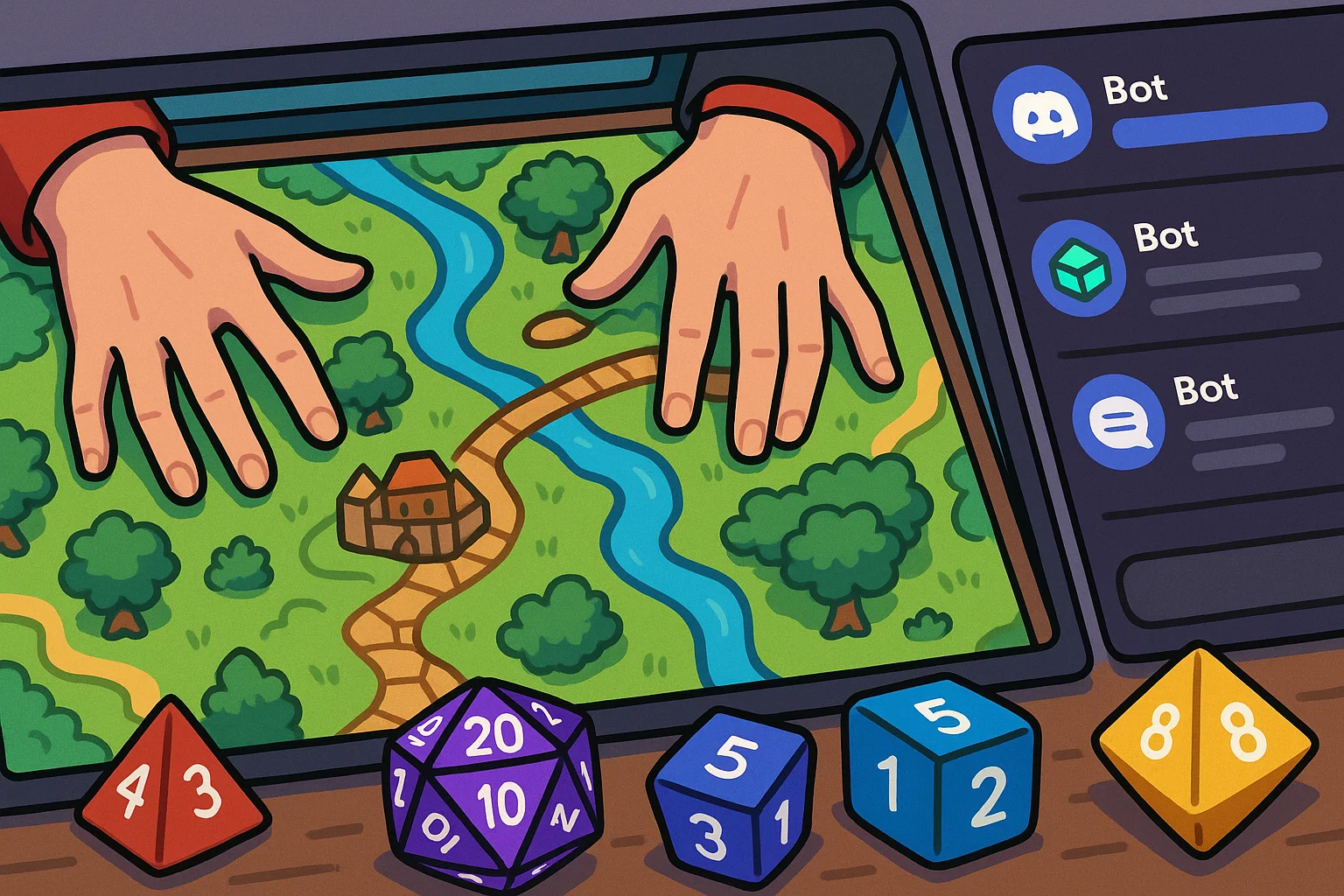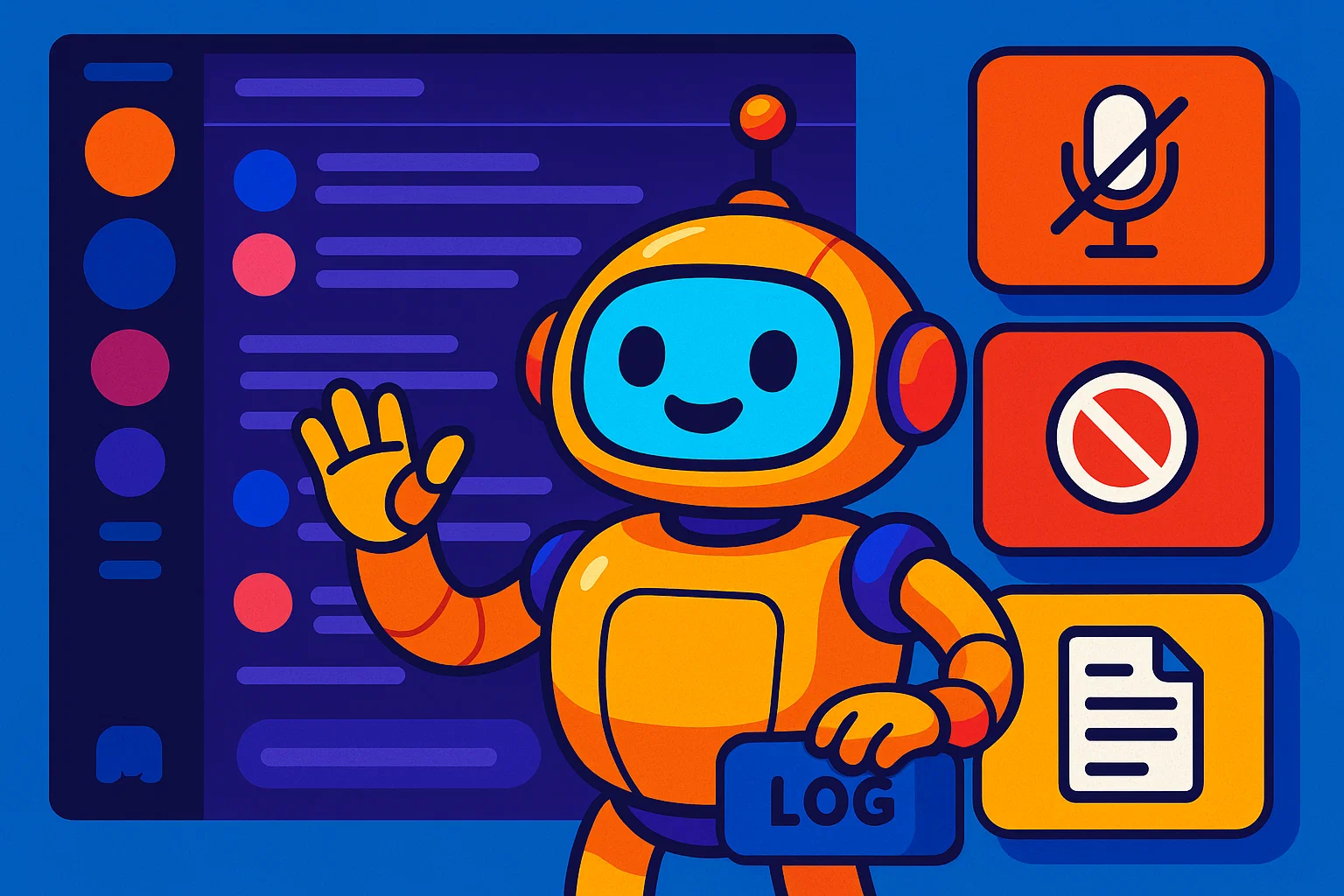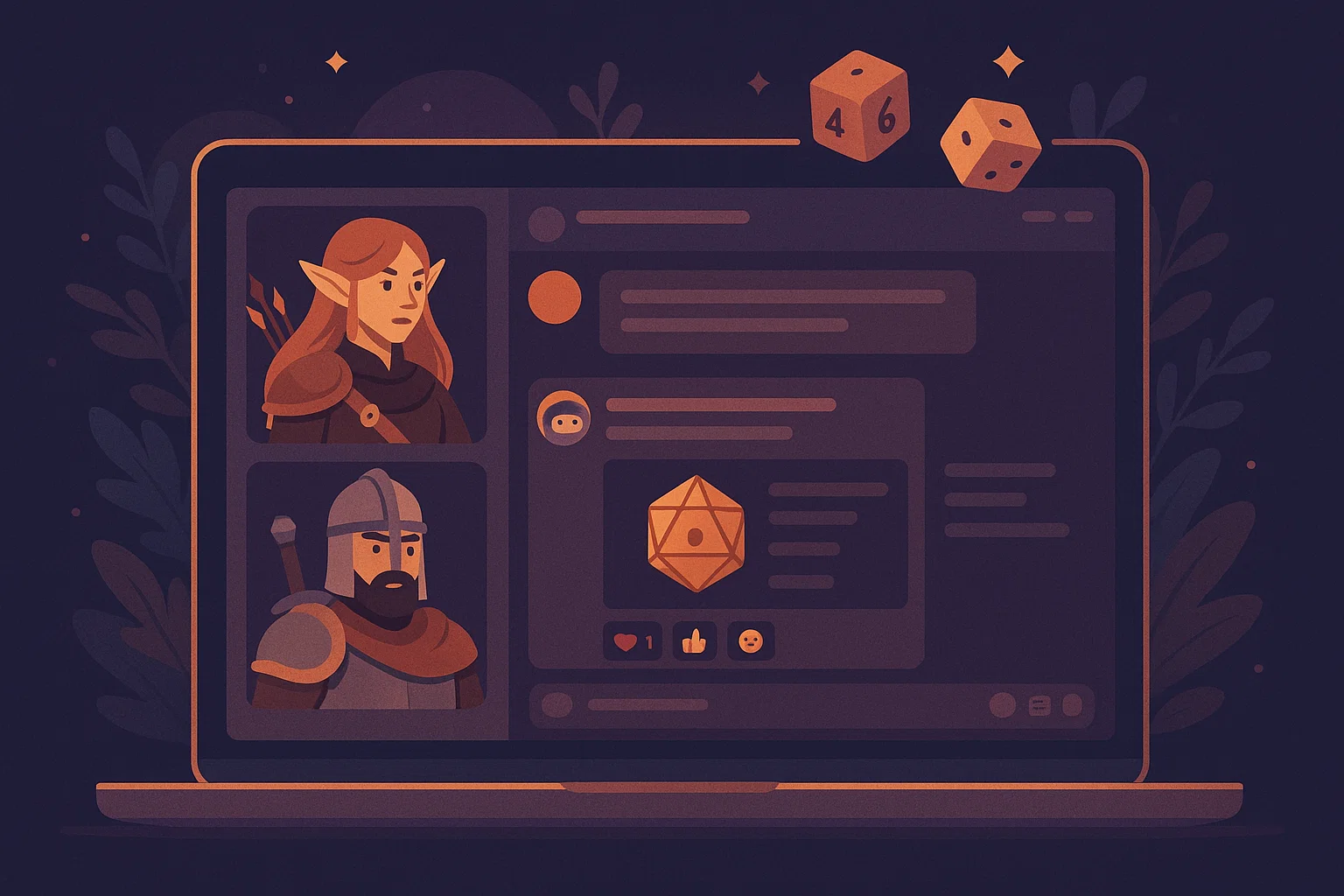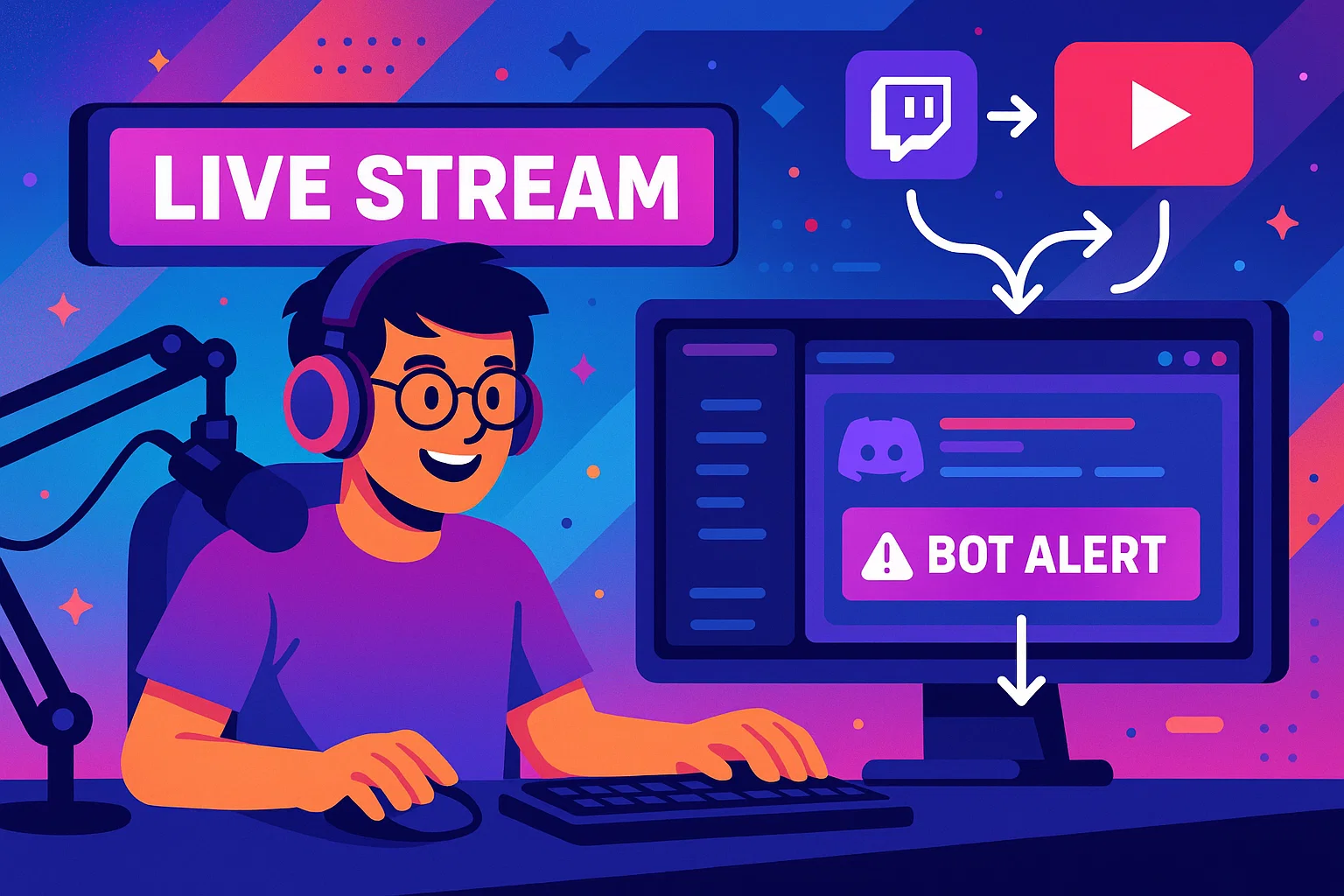Introduction
Running a DnD campaign is a juggling act: maps, initiative trackers, spells, NPCs, loot, and the tiny chaos that makes every session unique. Discord bots for DnD remove the repetitive grind so you can focus on the fun parts — roleplay, story beats, and surprise moments that become memorable.
Great bots handle dice math, track initiative, manage character sheets, and keep session logs. They don’t replace a DM’s creativity; they reduce friction. Use them well and your sessions will feel smoother, fairer, and faster.
“A well-configured bot is the DM’s assistant: accurate, patient, and never distracted.”
Why use Discord bots for DnD?
Bots do more than automate rolls. They:
- Remove arguments about dice results by recording or privately rolling.
- Streamline combat with initiative queues and timed turns.
- Keep character data consistent: HP, spell slots, inventory.
- Allow asynchronous play — play-by-post campaigns benefit hugely.
- Preserve campaign continuity with logs, loot records, and session notes.
When rules and bookkeeping are handled reliably, players spend less time on mechanics and more time on immersion.
“When the mechanics are predictable, space opens up for improvisation and roleplay.”
Key features to prioritize
Dice and roll parsing
Support for complex roll expressions (4d6kh3+2), advantage/disadvantage, exploding dice, and crit/fumble handling is essential. A bot that misinterprets roll strings will slow your game.
Character sheets and stats
Look for bots that let players save HP, AC, spell slots, proficiencies, and inventory. Some bots support importing official 5e sheets or provide customizable fields for homebrew content.
Initiative and combat tracking
A proper initiative tracker sorts turns, advances rounds, applies timed effects, and can ping the active player. Auto-advance and round counters are lifesavers in long fights.
Macros and shortcuts
Macros for attacks, spell casts, or common checks let players perform complex actions with one command. A macro like /cast fireball 8d6 save DC 14 saves time and reduces mistakes.
Journal, loot, and session logs
Automatic logs of rolls, loot, XP, and session recaps make it easy to review what happened and who got what. Searchable campaign logs are great for late-join players.
Permissions and privacy
You’ll want flexible channel permissions: public checks, private DM-only rolls, and a secure DM-only channel for secrets or hidden mechanics.
Top bot categories and how to use them
Below are practical categories with recommended capabilities and usage tips. (Bot names are illustrative — choose specific, well-maintained bots that match these features.)
Dice-rolling essentials
A dedicated dice bot should parse any dice expression, handle advantage/disadvantage, and support private rolls. Use a dedicated #rolls channel so dice spam doesn't clutter the main chat. Teach players the shorthand (pin a cheatsheet).
Usage tip: Encourage visible rolls for contested checks and private rolls for stealth or secret perception.
Character managers
Character sheet bots give each player a stored profile with HP, spells, equipment, and notes. Commands like !sheet set hp 28 or !sheet show @player make in-session checks fast.
Usage tip: Restrict editing so only the sheet owner (or DM) can change values. Export sheets periodically as backups.
Combat and initiative tools
Initiative bots should accept !init add Goblin 12, !init start, and !init next. They should support conditions (!status @player stunned 2) and timed effects that expire automatically.
Usage tip: Use pings sparingly — ping only the player whose turn it is to avoid notification fatigue.
Campaign and journal helpers
A campaign log bot can store NPC bios, quest statuses, and session recaps. After each session, the DM or a designated scribe can run !log add "Port Raid recap:..." to keep everything searchable.
Usage tip: Tag NPCs and locations for quick lookups during sessions.
Loot and economy management
Loot bots help split gold or track item ownership. Commands like !split 120 gold prevent "who got what?" debates and keep the party ledger clean.
Usage tip: Combine loot bots with a pinned loot policy to avoid disputes.
Step-by-step setup guide
1. Create a bot-management channel
Make #bot-commands or #bot-setup where only DMs and admins can add or remove bots. This prevents accidental configuration changes.
2. Define roles and permissions
Create Player, DM, and Bot roles. Restrict sensitive channels (e.g., #dm-only) so only the DM and relevant bots can read or post.
3. Add and configure bots
Invite chosen bots with the minimum required permissions. Configure command prefixes and test core features: rolls, initiative, and sheet edits.
4. Pin command cheatsheets
Pin the most-used commands in relevant channels. Example pins: /roll syntax, !init start, !sheet update hp.
5. Test before you play
Run a mock combat and a few skill checks. Resolve conflicts or confusing behaviors ahead of time.
“Ten minutes of testing prevents thirty minutes of interruptions.”
Best practices for smooth sessions
- Keep humans first: bots should assist, not control the narrative.
- Document house rules in
#house-rulesso everyone — bot and players — follows the same system. - Silence non-essential bots during roleplay scenes to preserve immersion.
- Backup bot-stored data regularly — bots can change ownership or disappear.
- Limit the number of bots to avoid overlapping commands and confusion. Two to four well-chosen bots usually cover everything.
Custom bot ideas for tailored play
If you can code or commission a bot, prioritize these features first:
- Robust dice parser with homebrew modifiers.
!castthat consumes spell slots and logs usage.!npc spawnto add NPCs to initiative with a single command.!questtracker that assigns XP and marks quest progression.
Start with dice and initiative. Add character sheet and journal features once core flow is stable.
Common pitfalls and how to avoid them
- Too many bots: each one is another permission set and potential conflict. Choose quality over quantity.
- Conflicting prefixes: standardize on
/or!and remove redundant bots. - Public secrets: use DM-only channels or private roll features for hidden checks.
- No backups: export logs and sheets regularly to protect against data loss.
Example session flow using bots
- Players join the
#session-lobbyand a reminder bot posts!remind session in 15 minutes. - DM runs a quick health check: players
!sheet update hp 27. - Fight starts:
!init startsorts initiative and posts turn order. - Players use macros for attacks (
/macro longbow) or roll directly (/roll 1d20+5). - Combat ends:
!split 240 golddivides loot; DM logs the session!log add "Cave of Soot recap".
This keeps the session quick and focused on storytelling.
Conclusion
Discord bots for DnD are not a crutch — they’re a toolkit. The right selection of bots cuts friction, speeds up combat, and preserves campaign continuity. Begin by automating dice and initiative, then layer in character management and campaign logs as your group grows comfortable.
“Tools should fade into the background — doing their work so the story can come forward.”



